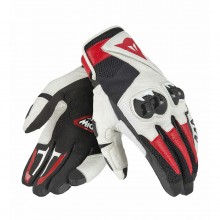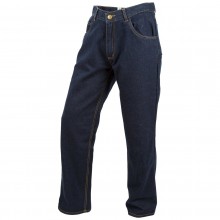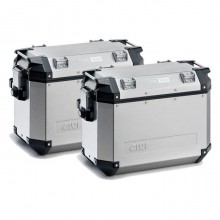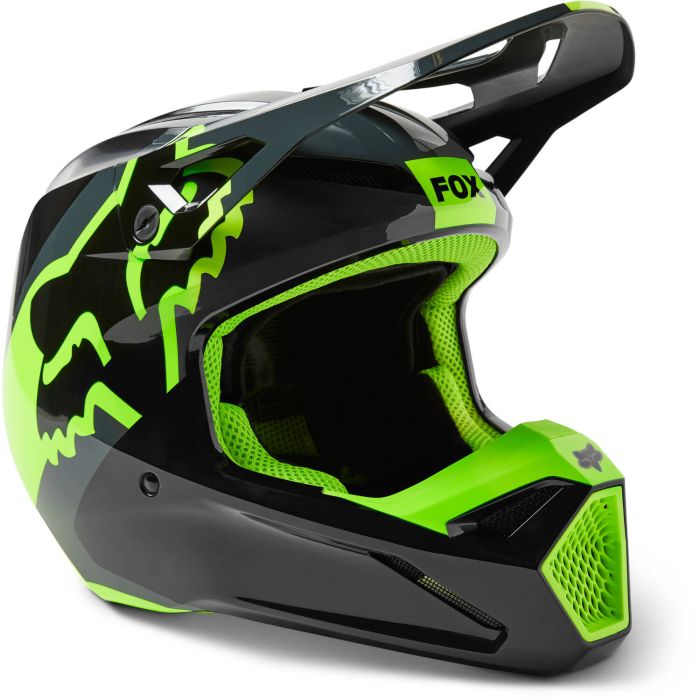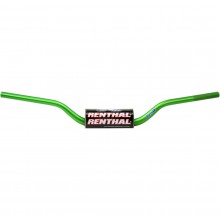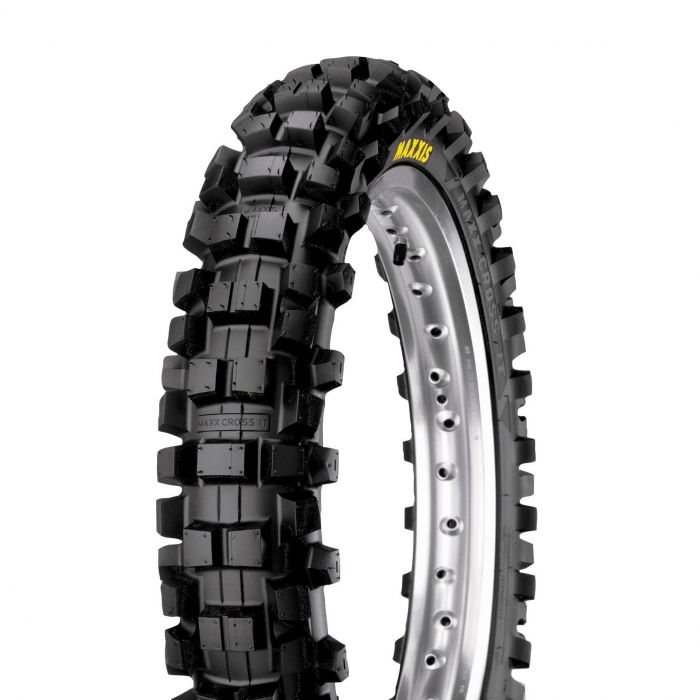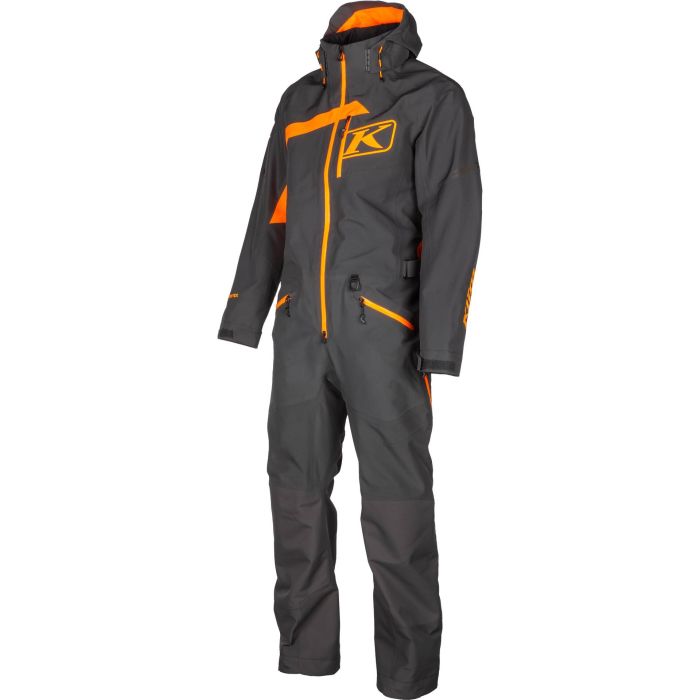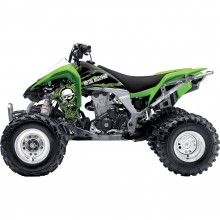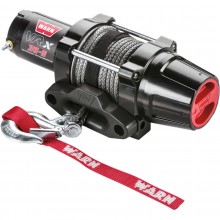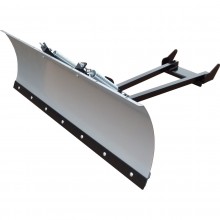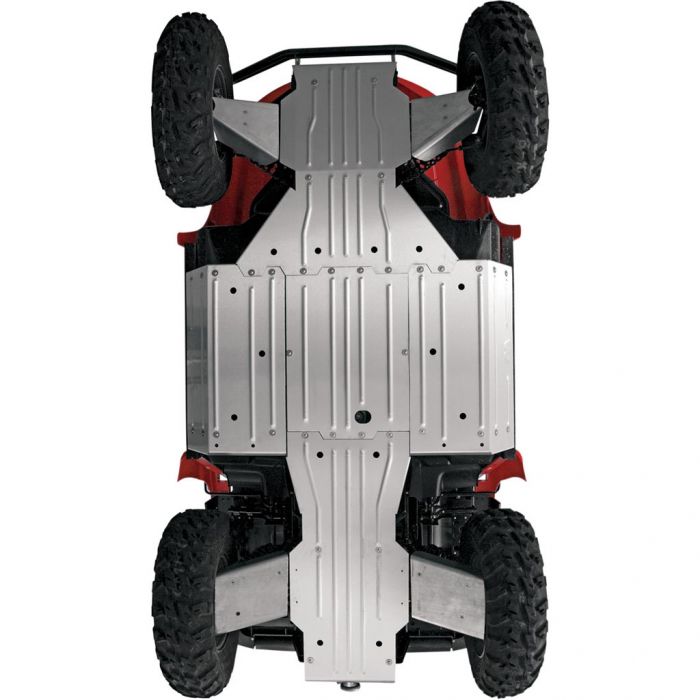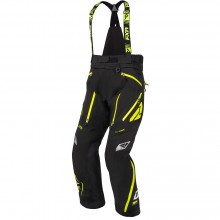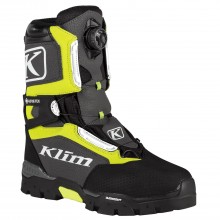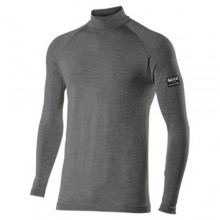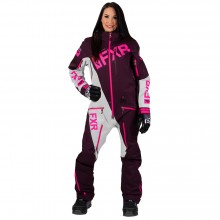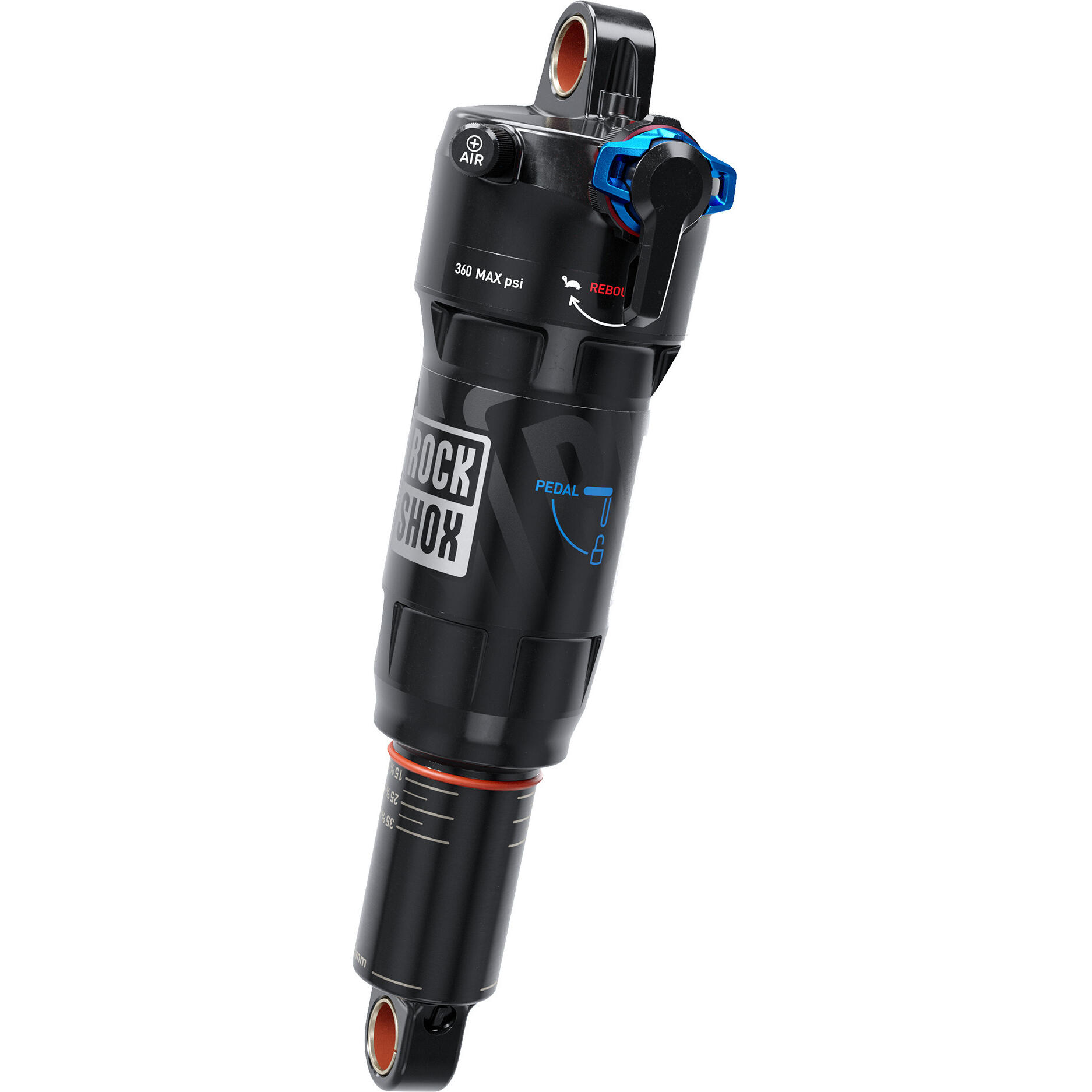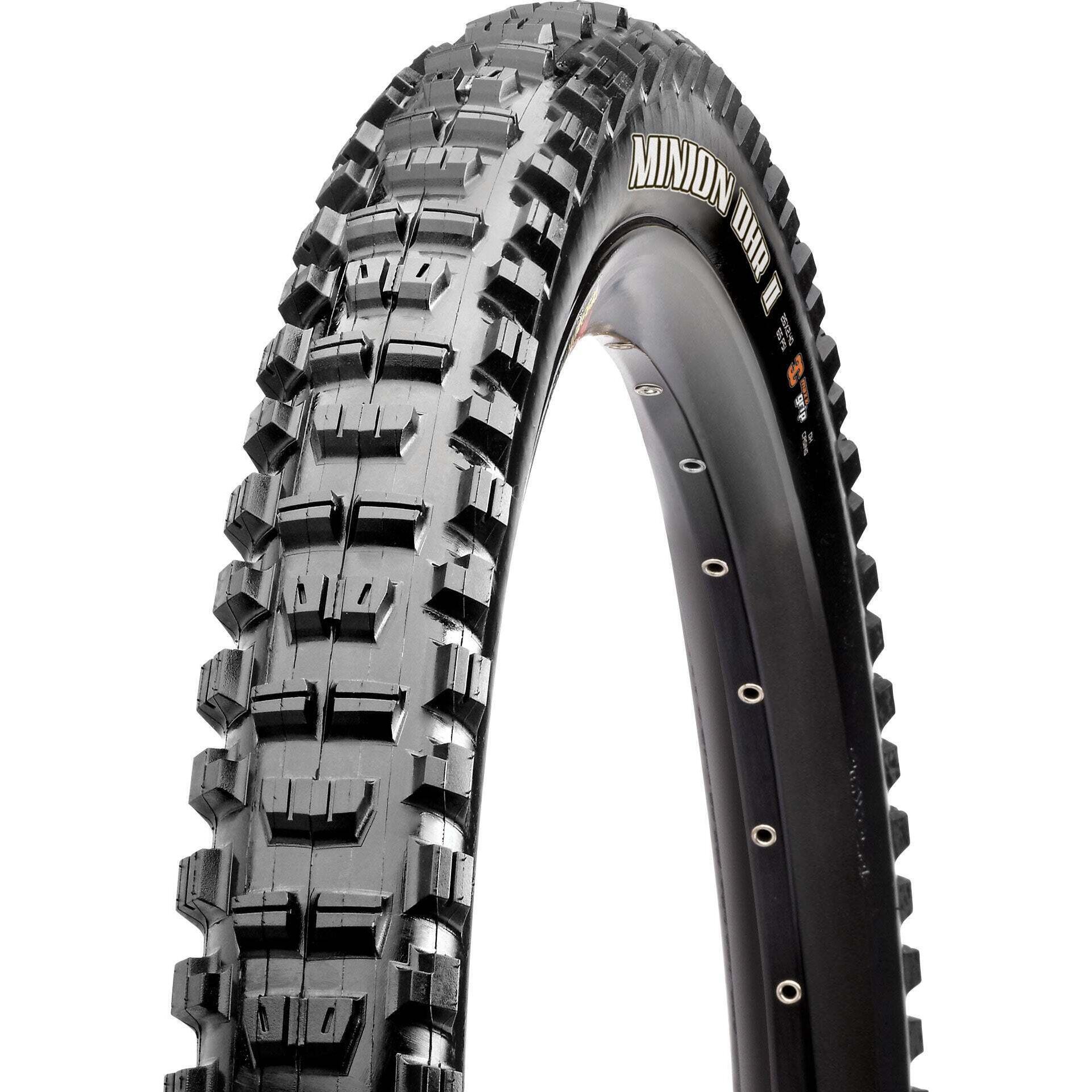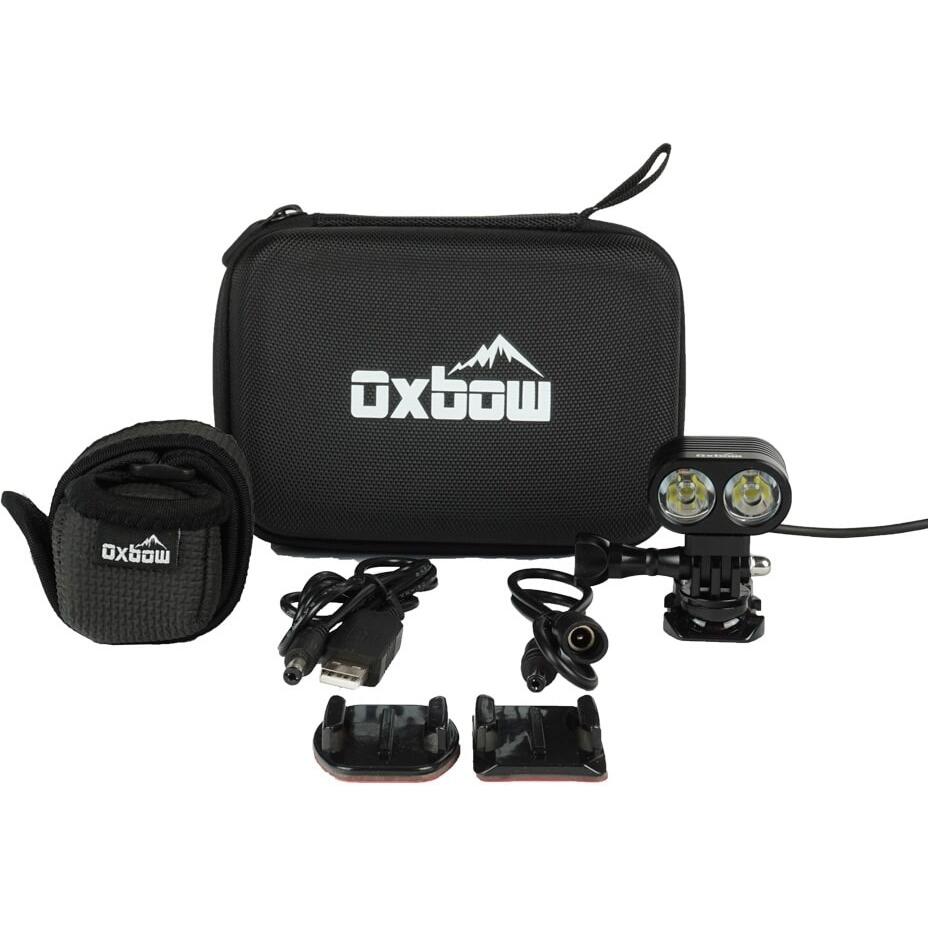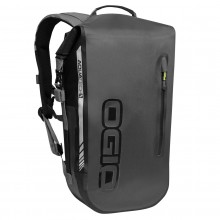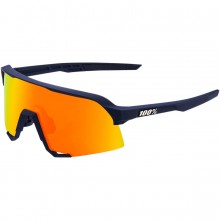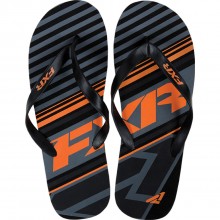Leather
Leather Thickness and Weight
For a given thickness or weight, leather offers the best sliding protection. The Taber Test is used to quantify this resistance. Basically, it involves turning a rough wheel over the leather and counting the revolutions until a hole is formed. Abstract as it may be, the number of rotations has some relation to how far you can slide. Or rather, how far you can slide before things get a bit …. uncomfortable.
Here’s how different leathers stack up:
| Material Type | Thickness (mm) | Weight (oz. / sq. ft.) | Taber Test Result (revolutions) |
|---|---|---|---|
| Lightweight Leather (nude) | 0.5 – 0.8 | 1.0 – 2.25 | 564** |
| Fashion Weight Leather (acrylic coated) | 0.7 | 1.75 | 750** |
| Competition Weight Leather | 1.2 – 1.6 | 3.0 – 4.0 | 2600 |
| Super Heavyweight Leather | 1.7 – 2.0 | 4.0 – 5.0 | 2600 |
| ** Note: While lightweight and fashion weight leather performed reasonably well in this controlled test, they are generally weak under random moments of strain (i.e. striking a pebble on a real-life road). For this reason, they are not recommended for motorcycle use. - Cycle Magazine (1988, September). “Abrasion Testing: Torn in the USA." | |||
When choosing leather thickness, you’re always balancing safety and flexibility. The thickest leathers offer the best abrasion resistance and they’re excellent for chaps, boots and looser fitting jackets. However, super heavyweight leathers aren't always the best choice. If you’re a dynamic rider or racer, you’ll want leathers that fit like a glove – not a shoe.
Animals Used for Leather
You should also think about where your leather comes from. Kangaroo leather is flexible and lightweight, while maintaining superior abrasion resistance. For this reason, it is popular among MotoGP racers. Cowhide leather has a slight decrease in performance, but it is less expensive and widely available. Thus, cowhide is the most common animal type you will come across.
The motorcycle industry also employs buffalo, goat and sheep leathers, which are similar to cowhide in quality. Occasionally, you’ll find garments made from obscure things like deer and stingray. These are extremely good and can rival K-leather for strength. They are also supremely expensive, and some people find it weird to ride around in stingray skin. Your call.
With all leathers, pay attention to the type . Full-grain leather has the best strength and breathability. It will also develop a natural patina over time. Top-grain leather has been sanded and treated, and is slightly less durable and breathable. However, it also has a thinner, more uniform finish. Split leather is made from the fibrous part of the hide; it's the cheapest option. Split grain is great for fashion but almost useless for falls – motorcyclists should stay away.
Textile
The word “textile” is absolutely loaded – all kinds of synthetic and natural fibers get lumped into this category.
Advantages and Disadvantages of Textile Motorcycle Garments
Textiles are normally less expensive than leathers. They are also easier to maintain – many of them can be thrown in the washing machine. Textile gear outperforms leather in terms of breathability, waterproofing, weight and drying time. The presence of stretch fabrics can also make them more flexible and comfortable, although the latter is a matter of preference.
So, textile jackets appear to outperform leather in every regard and they cost less to boot. What gives?
Well, the jacket gives. As in, gives way after a few seconds of sliding. Of course, some textiles perform much better than others – nearly challenging competition leathers in abrasion resistance.
There are Taber numbers for textiles as well, but I was reluctant to include them. For one, the study was conducted by a now-defunct magazine. Plus it’s over 25 years old. This wasn't such a big deal for leathers – cows haven’t changed much since 1988. Textiles, on the other hand, have seen huge advancements. So the numbers probably aren't 100% reliable, but here they are anyway. Take them with a grain of salt.
| Material Type | Weight (oz. / sq. ft.) | Taber Test Result (revolutions) |
|---|---|---|
| Cordura Nylon Type 440 | 0.89 | 559 |
| Senior Ballistic Nylon (1050 denier) | 1.5 | 817 ** |
| New Denim | 1.6 | 225 |
| Old Denim (2 years) | 1.6 | 168 |
| Kevlar-Aramid | 0.19 | 506 |
| ** Note: While senior ballistic nylon performed reasonably well on the controlled Taber test, it is poor under random moments of strain (i.e., striking a pebble on a road). For this reason, its real-life abrasion resistance is likely lower than that indicated by the Taber number. Cycle Magazine (1988, September). “Abrasion Testing: Torn in the USA.” | ||
Of course, Taber Tests reveal the abrasion resistance of the fabric only. And motorcycle gear often employs other layers: comfort liners, insulation, waterproof membranes and – most importantly – armor plating. So the exterior material isn't everything when it comes to motorcycle safety.
Common Textile Fabrics
Textiles often have silly names, which make them seem more technically advanced than they really are. Here’s a no-nonsense breakout of some common ones.
- Gore-Tex : a waterproof membrane. It is lightweight and breathable, yet still impermeable to water. For this reason, Gore-Tex is highly desired for all-weather use.
- Aero-Tex : a waterproof and breathable membrane. It’s basically a copycat of Gore-Tex, even when it comes to the name.
- Ballistic Nylon : a basket-weave nylon originally developed for flak jackets. “Ballistic” is a misnomer – this fabric is not actually bulletproof. High-denier (high fibre density) Ballistic Nylon can be very tough. On the flip side, low-denier Ballistic Nylon is nothing special.
- Polyurethane-coated Nylon : a nylon coated in polyurethane – duh. Most nylons are partially coated with polyurethane, as it is useful for locking threads into place. However, it can hinder breathability, increase drying time and – potentially – burn onto your skin during a crash. High-quality apparel should have a low amount of polyurethane coating – less than 20% or so.
- Cordura : a type of fabric – normally nylon – which is known for its excellent abrasion resistance and durability. High deniers (around the 1000 mark) offer the best strength. They are a favorite among motorcyclists.
- Kevlar : the famous “bulletproof” fibre, known for its exceptional tensile strength. Kevlar must be interwoven with another fabric for motorcycling use, but be careful! Some companies will add an insignificant amount of Kevlar just so they can drop the name. So look for specific amounts, because more is better. Kevlar dissipates heat better than leather, and can have a high abrasion resistance. It is often the only textile fabric approved for racing use.
- Aramid : an incredibly tough and heat-resistant synthetic fibre. It has excellent abrasion resistance, and shares many properties with Kevlar (which is a para-aramid).
- PVC (Polyvinyl Chloride) : a plastic coating, sprayed onto fabrics to make them waterproof. This is normally found in lower-end waterproof garments, while premium models will make use of a breathable membrane like Gore- or Aero-Tex.
- Taffeta : a lightweight, breathable fabric. It is most often used as a liner for motorcycle jackets and pants. Taffeta is comfortable against the skin, and is easily slipped on and off.
- Mesh : a net-like material, normally made from some kind of high-denier synthetic fabric. Mesh jackets and pants are very breathable, and rely primarily on interior armour for abrasion resistance.
When it comes to textiles, price is usually a good indicator of quality. Abrasion-resistant materials are expensive, so premium jackets use more of them.



